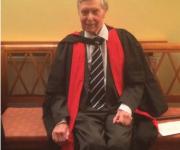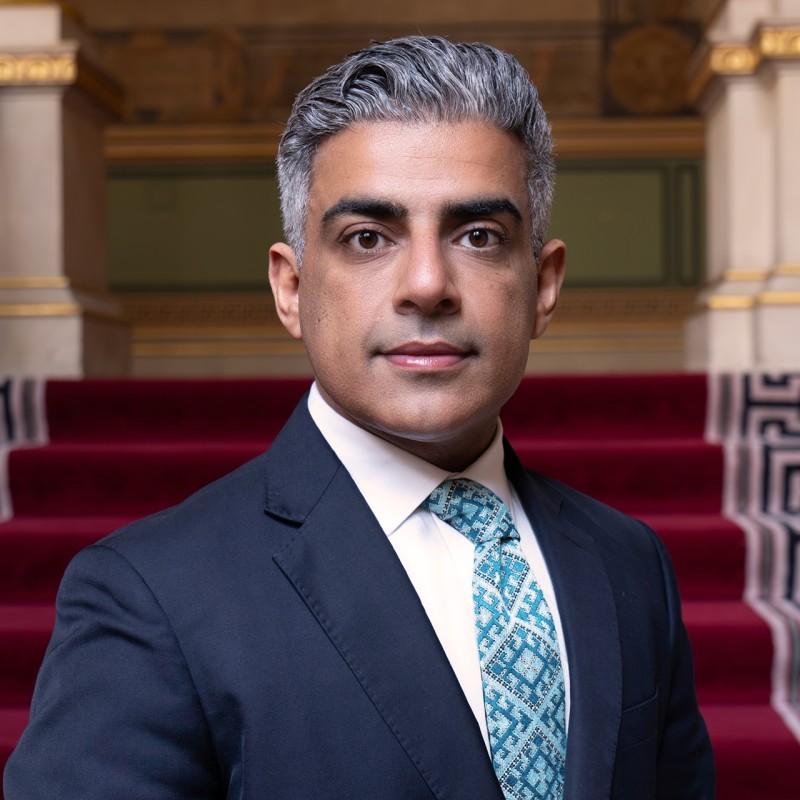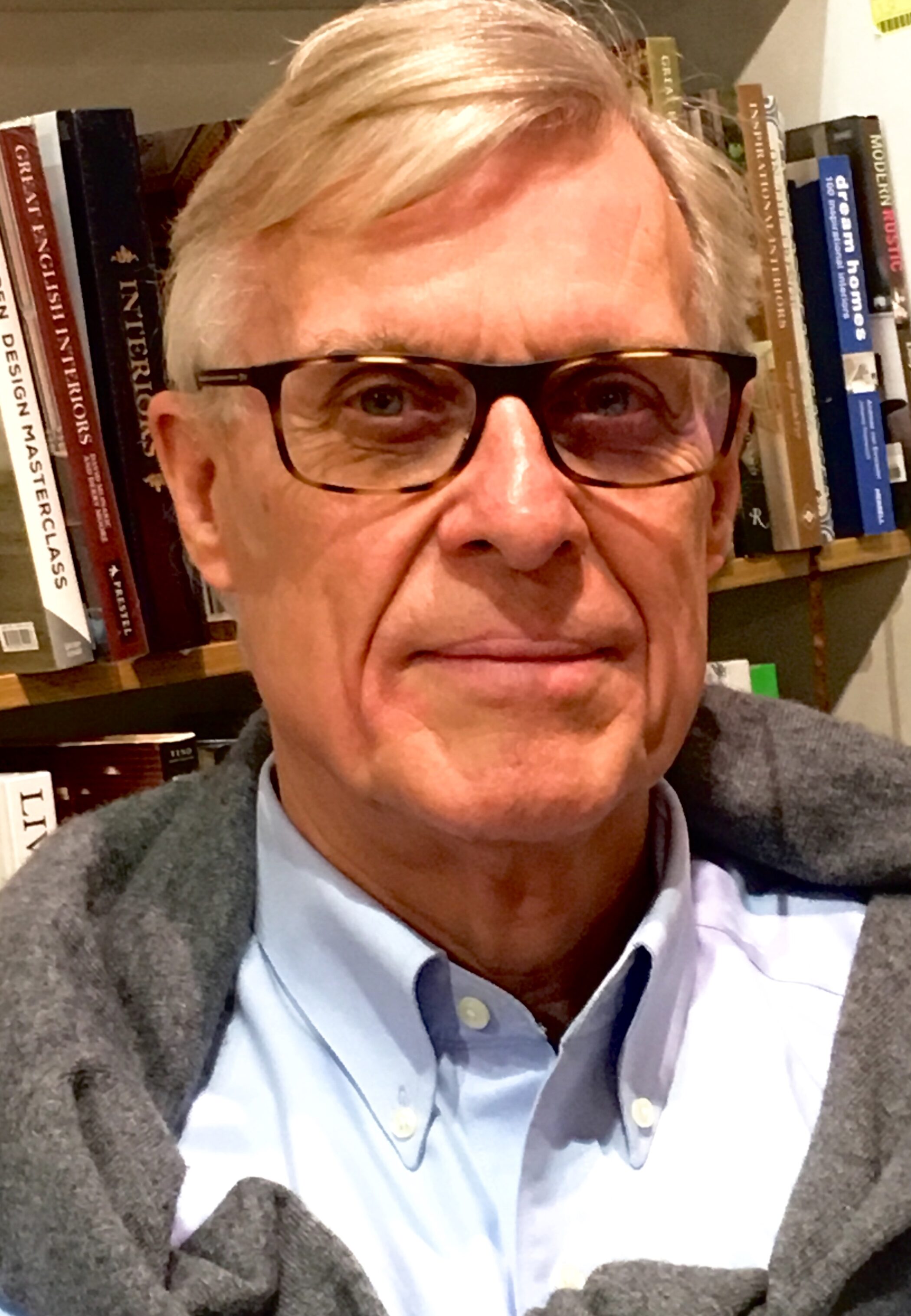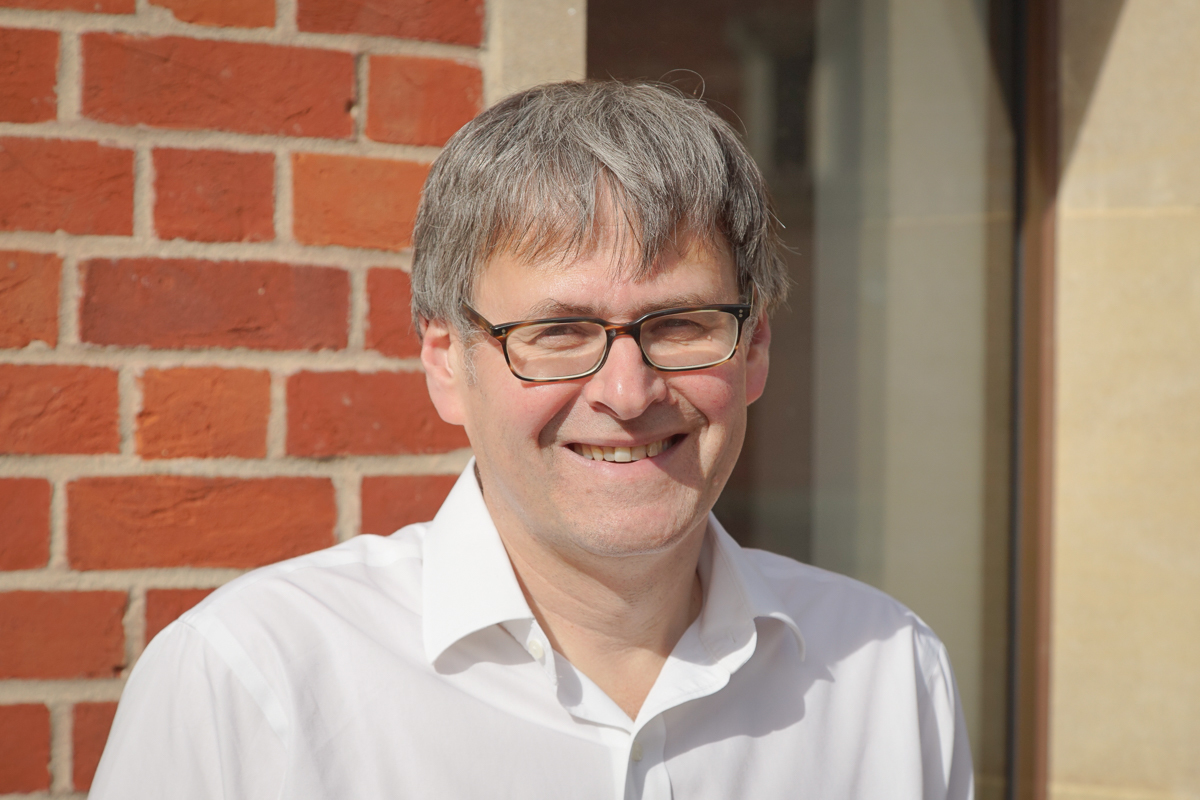Members of the College were saddened to learn that Bruce Elsmore (Senior Tutor, 1978-1989), died peacefully during the evening of Saturday 24th August 2019. His Requiem Mass was held in the College Chapel on Monday 16th September and he is buried at Barton, the village in which he lived, just outside Cambridge. Bruce will be remembered by all who knew him in the College as a kind, warm, gentle, thoughtful and unassuming person – a man whose Catholic faith was an important component of his life, a committed family man, someone with a conscientious and deep loyalty to the College and a highly respected radio astronomer who was always prepared to share his interest in astronomy. Bruce was the College’s longest continuously serving Fellow, having been elected to the Fellowship in 1966 and becoming an Emeritus Fellow in 1993, but his links to the College go back earlier. He and his beloved wife Annette regularly attended Mass in the College Chapel from the 1950s along with their three daughters, Susan, Jane and Mandy.
Bruce was born in Oxford in 1926 and educated there at Magdalen College School until 1943, in the middle of the Second World War. He then served in the Royal Navy as an Ordinary Seaman until coming up to Cambridge as an undergraduate at Pembroke College in 1945. Shortly after graduating in 1948, Bruce joined the Cavendish as a Research Assistant in the small radio astronomy group led by Martin Ryle. Bruce was soon involved in the design, development and maintenance of radio receivers and the operation of the early radio telescopes that led to the first mapping of radio sources from way beyond our own galaxy. The initial radio astronomy field station, which Bruce visited daily, was in Grange Road near the University Rugby ground but the need for more widely spaced aerial systems soon led to expansion into the Old Rifle Range and then into countryside, which involved the whole group cutting down hawthorn bushes, digging holes and banging in angle iron. The need for expansion and development of bigger radio telescopes became a theme through much of Bruce’s professional life. The considerable amount of physical work involved in laying cable, building telescopes and operating them is a striking feature of an unpublished account that Bruce wrote in 2015 of his memories of the early days of radio astronomy. By the end of the 1950s, Grange Road was too small and the new One Mile telescope, including its three fully steerable dishes, was constructed on the former RAF bomb dispersal site at Lord’s Bridge just beyond Barton on the A603. The operation of these dishes brought its own physical challenges, not just the need to climb high into the structures and make adjustments, but also the manhandling of power and signal cables when the telescopes moved. Perhaps it as just as well that by this time Bruce and Annette had three daughters, because at weekends Bruce would recruit them to help with this arduous task which could not be done by one person alone. Eventually, when the Cambridge-Oxford railway line was axed in 1968, the University purchased 3 miles of the track adjacent to Lord’s Bridge allowing the building of the 5 Kilometre telescope, with which Bruce was intimately involved, and which took his work on positional astrometry to a much higher degree of accuracy.
When Bruce was first recruited to the Cavendish, he was specifically told that he would not be eligible to publish an account of any work done. Nevertheless, his original contributions to the work of the group, during what were the first surveys of the radio sky, were such that within a few years he was a co-author of the First Cambridge Catalogue of 50 Radio Sources (the 1C survey), along with Graham Smith and Martin Ryle. This was the first of Bruce’s almost forty scientific publications, not only describing the telescopes, but also his own pioneering contributions to radio measurements. These included high resolution observations of Cygnus and Cassiopeia and also what was at the time the best estimate of the density of the lunar atmosphere, achieved after detecting a very slight unexpected alteration in the radio signal from the Crab Nebula, years before space probes landed on the moon. This was a feat which caused a lot of interest and resulted in Bruce’s picture appearing in Time magazine alongside the caption ‘Broken atoms, Bent waves.’ This was not Bruce’s only brush with wider fame. On most Saturday mornings in the 1950s the whole radio astronomy group met for discussions in the old Cavendish and Saturday 4th October 1957 was no exception. The group heard the news that the Russians had launched the world’s first artificial earth satellite, Sputnik 1 and it was transmitting a radio signal at 20 MHz. Bruce and a research student, George Whitfield, were immediately dispatched to Grange Road to modify the equipment to see if they could pick up the Sputnik’s signals when it passed over Britain for the first time that afternoon. Bruce and George did indeed pick up the signal and they stayed up all night tracking the satellite as it passed over every 90 minutes. It was they who informed Jodrell Bank and optical astronomers in the UK where to point their telescopes. By the next day the Press had found out and they were inundated by dozens of reporters. Indeed, as Bruce much later described, his wife Annette was roped in to man the telephone which rang incessantly. She was asked, “What is happening? What does the laboratory look like? What can you see through the window?” Next day, their photographs appeared on the front pages of many national newspapers and to this day, a photograph still exists in Cambridge of Bruce, surrounded by a group of fascinated observers, plotting the orbit of Sputnik 1 on the surface of a globe.
Typically, Bruce was always very modest about his publications, but it is interesting to note that nine were in the leading scientific journal Nature and it was his publications that eventually led directly to the award of the degree of PhD under ‘special regulations’ and also contributed to his several promotions, up to Assistant Director of Research. Of course, the work of the Cambridge radio astronomy group is most famous because it led to the award of the Nobel Prize in 1974 to Martin Ryle and Tony Hewish. Not many scientists win Nobel Prizes, and not many more are name checked in Nobel Prize lectures, but in his Prize lecture, Martin Ryle spoke about Bruce, specifically mentioning both his collaboration with optical observers to map the positions of quasars and his work with the 5 Kilometre telescope to provide a direct measurement of astronomical time.
There was clearly a highly developed sense of humour as well as serious academic work in the radio astronomy group. A treasured possession in Bruce’s family is a ‘petition’ to Annette signed by members of the group including Martin Ryle and Tony Hewish that came about because at some point in the early 1950s, Bruce, who was always smartly dressed, had decided to wear his old demob suit, given to him when he had left the Royal Navy. The ‘petition’ reads “We the undersigned wish to register our disapproval of the unconventional clothing which your good husband has seen fit to assume, for the following reasons (i) it shows up the other people; (ii) it makes him difficult to recognize as a member of the group. We therefore beg you dear Madam to exert your influence so as to bring him back to the fold”.
In 1966 Bruce was elected a Fellow of what was then a fledgling graduate College, St Edmund’s House. From the start, he made a huge contribution to the transformation of St Edmund’s from a house of residence to a graduate College. Bruce very soon became Praelector and Assistant Bursar and it wasn’t long before he was playing a role on the tutorial side as the College grew, eventually becoming Senior Tutor in 1978, a post he held for 11 years. Bruce really set the standard for the commitment needed to be the Senior Tutor and he worked tirelessly to ensure that the growing number of students received a warm welcome and were well supported. Several of our alumni have written attesting to that warm welcome, commenting that it didn’t just come from Bruce but from his whole family. Indeed, it became a tradition for Bruce and Annette to invite all current students to their home in Barton for evening dinner, which meant towards the end of Bruce’s stint as Senior Tutor that many dinners had to be arranged for what had become a student body approaching 100. When the College was still supported by an order of German nuns who organized all of the catering, Bruce and Annette also ensured that they cooked and served the end of year dinner for students in order to give the nuns a rare night off. Bruce truly treasured the College’s Catholic character and helped to create and nurture its friendly environment. This included using his personal hobbies of photography and playing the piano, especially jazz favourites, to enrich the life of the Combination Room. In addition, Bruce and Annette ensured that our sports teams in the early 70s were always assured of clean kit for every match, thanks to the ‘Elsmore Laundry Service.’
Bruce always tok great care to support the student body as a whole as well as the needs of individual students, whatever those needs were. In the early 1970s when the students wanted to use some ground at the back of the College as a football pitch on which to play against other College teams, it was Bruce who overcame the implacable opposition of the Fellow responsible for the gardens, because a pine tree would have to be felled or removed. He then personally assisted in its removal and replanting. Bruce’s support of sport in the College wasn’t limited to laundry duty and helping to secure the football pitch. He coached some of the earliest St Edmund’ crews on the river including the first Men’s eight that in the mid-1970s won the College’s first May Bumps blade. He was Senior Tutor in the 1980s when the College had its first members playing in the Men’s Rugby Varsity Match at Twickenham, as well as our first student in the Women’s Blue Boat. Bruce always followed with great interest the sporting careers of those of our students who represented the University, especially in the Boat Races and Varsity Rugby matches, and continued to follow those few who went on to make international appearances.
As well as his long stint as Senior Tutor, Bruce did so much else for the College. He helped to create the College archive, recorded and annually audited the College silver and was a long serving and active member of the Dean’s Committee. He also helped maintain the College’s historic links with St Edmund’s College Ware, where he was a governor for 8 years. In the Chapel, Bruce organized the collection, read the scriptural lessons, was a eucharistic minister, prepared the crib for Christmas and was a tower of strength in launching the appeal to purchase a new organ in 1999. With Annette, he was a true lynchpin of the Chapel community.
Bruce Elsmore was a kind man, a gentleman, a true friend to many members of St Edmund’s and a very good scientist. His record of unstinting service to St Edmund’s will scarcely be surpassed.





